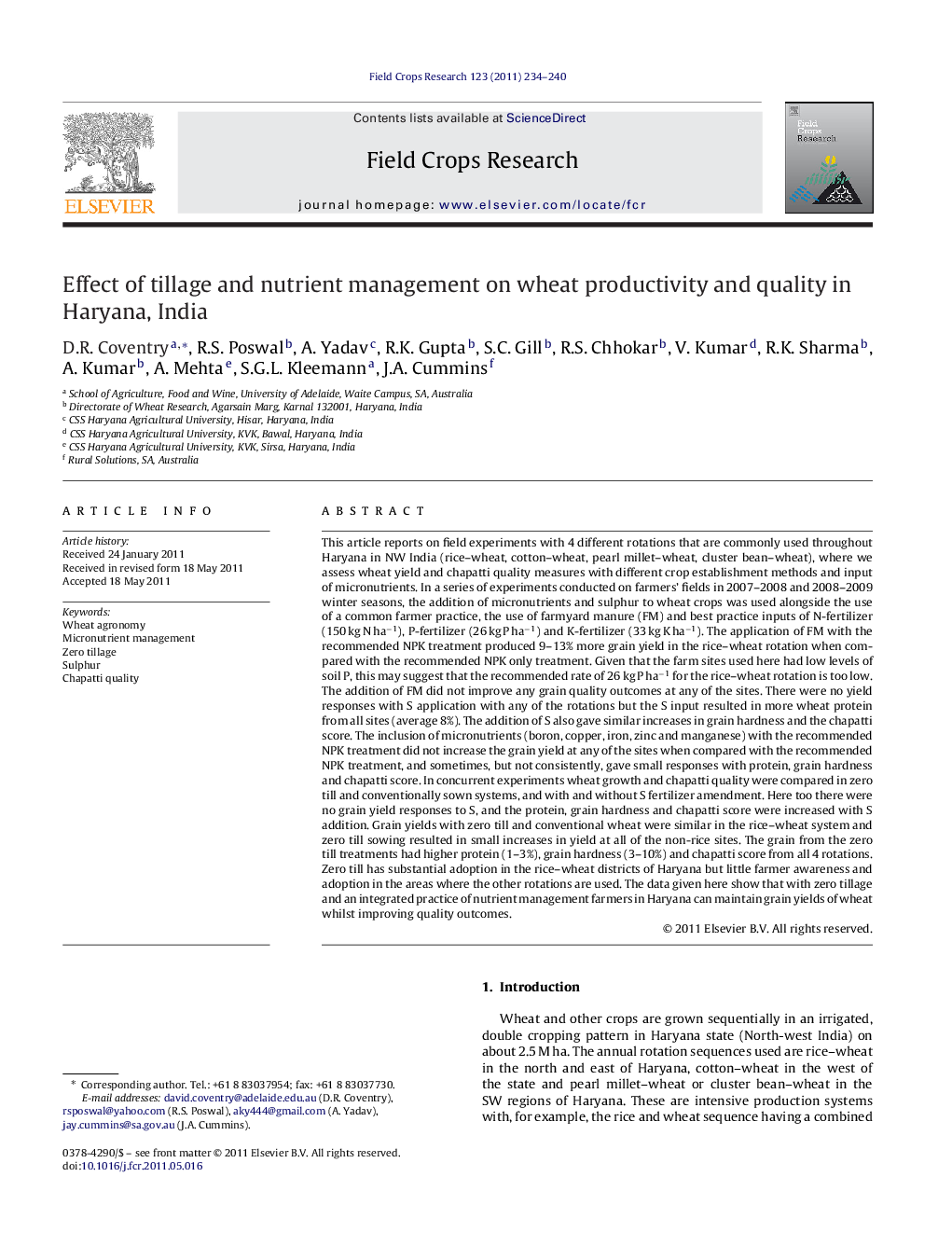| کد مقاله | کد نشریه | سال انتشار | مقاله انگلیسی | نسخه تمام متن |
|---|---|---|---|---|
| 4510550 | 1321862 | 2011 | 7 صفحه PDF | دانلود رایگان |

This article reports on field experiments with 4 different rotations that are commonly used throughout Haryana in NW India (rice–wheat, cotton–wheat, pearl millet–wheat, cluster bean–wheat), where we assess wheat yield and chapatti quality measures with different crop establishment methods and input of micronutrients. In a series of experiments conducted on farmers’ fields in 2007–2008 and 2008–2009 winter seasons, the addition of micronutrients and sulphur to wheat crops was used alongside the use of a common farmer practice, the use of farmyard manure (FM) and best practice inputs of N-fertilizer (150 kg N ha−1), P-fertilizer (26 kg P ha−1) and K-fertilizer (33 kg K ha−1). The application of FM with the recommended NPK treatment produced 9–13% more grain yield in the rice–wheat rotation when compared with the recommended NPK only treatment. Given that the farm sites used here had low levels of soil P, this may suggest that the recommended rate of 26 kg P ha−1 for the rice–wheat rotation is too low. The addition of FM did not improve any grain quality outcomes at any of the sites. There were no yield responses with S application with any of the rotations but the S input resulted in more wheat protein from all sites (average 8%). The addition of S also gave similar increases in grain hardness and the chapatti score. The inclusion of micronutrients (boron, copper, iron, zinc and manganese) with the recommended NPK treatment did not increase the grain yield at any of the sites when compared with the recommended NPK treatment, and sometimes, but not consistently, gave small responses with protein, grain hardness and chapatti score. In concurrent experiments wheat growth and chapatti quality were compared in zero till and conventionally sown systems, and with and without S fertilizer amendment. Here too there were no grain yield responses to S, and the protein, grain hardness and chapatti score were increased with S addition. Grain yields with zero till and conventional wheat were similar in the rice–wheat system and zero till sowing resulted in small increases in yield at all of the non-rice sites. The grain from the zero till treatments had higher protein (1–3%), grain hardness (3–10%) and chapatti score from all 4 rotations. Zero till has substantial adoption in the rice–wheat districts of Haryana but little farmer awareness and adoption in the areas where the other rotations are used. The data given here show that with zero tillage and an integrated practice of nutrient management farmers in Haryana can maintain grain yields of wheat whilst improving quality outcomes.
► Zero tillage benefits for wheat yield and chapatti quality.
► Chapatti quality responses to S and micronutrients in wheat grown in NW India.
► Low status of soil P in farmer fields.
Journal: Field Crops Research - Volume 123, Issue 3, 12 September 2011, Pages 234–240